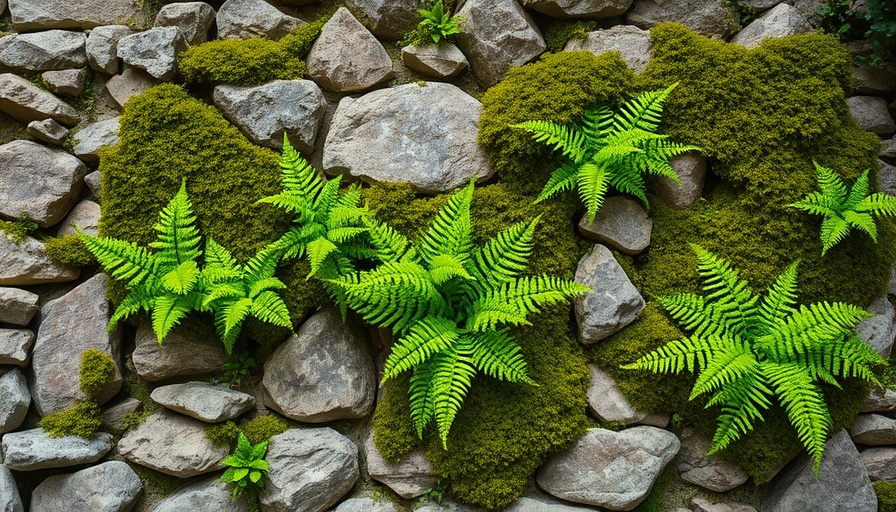
Reimagining the Power of Dry Stone Walls
Dry stone walls are much more than simple structures; they embody a celebration of nature and craftsmanship, intertwined with history and functionality. In a world increasingly detached from its natural roots, these stone formations remind us of the enduring beauty found in local materials. With their allure dating back to the Stone Age, dry stone walls have stood the test of time, blending seamlessly with landscapes and ecosystems.
The Benefits of Using Local Stone Materials
Utilizing locally sourced stones not only adds to the aesthetic appeal of gardens but also contributes to sustainability. As an inherently low-carbon material, stone offers a natural solution to building, often sourced right from one’s own property or nearby areas. By repurposing leftover stones from construction or remodeling projects, homeowners can minimize waste while adding charm to their outdoor spaces. The simplicity of these walls provides a deep sense of place, grounding the garden within its geographical context.
Creating Habitats with Dry Stone Walls
One of the most remarkable attributes of dry stone walls is their ability to serve as habitats for various creatures. According to Duncan Nuttall, a skilled garden maker and instructor in dry stone walling, the design of these walls creates niches that shelter much-needed wildlife. From lizards to nesting blue tits, these structures not only protect animals but also enrich the ecological balance of gardens.
Phil Brown, a waller in Gloucestershire, pointed out that dry stone walls support predator-prey relationships. The small mammals attracted to these walls can lure larger predators like stoats and weasels, contributing to biodiversity within our gardens. By incorporating built-in gaps for small animals to pass through, we foster a wildlife-friendly environment while enhancing the beauty of our outdoor spaces.
Craftsmanship and Community Connection
Building a dry stone wall is an art form that requires skill, patience, and an eye for design. The techniques involved are deeply rooted in tradition, passed down through generations. Learning from local artisans or even attempting DIY projects encourages community engagement and reinforces the connection between craftsmanship and the environment.
The act of creating these structures may also serve as a therapeutic endeavor. Engaging with stonework connects individuals with their surroundings, reminding us of the careful balance between humanity and nature. Moreover, having a hand in building these walls instills a sense of pride and ownership in the garden.
Designing with Dry Stone Walls
When it comes to incorporating dry stone walls into garden designs, options abound. From rustic dividing walls that delineate spaces to low walls that blend seamlessly with the landscape, creativity knows no bounds. Solutions can also be practical, doubling as steps, seating areas, or stormwater management systems, effectively marrying function with aesthetic.
Consider pathways, water features, or plant beds, each crafted from the same stone, creating a unified look that speaks to local vernacular architecture. The harmonious relationship between stone walls and other garden elements enhances overall functionality while providing distinct visual appeal.
Future Trends: Embracing Sustainability in Landscaping
As we advance into a more eco-conscious era, the relevance of dry stone walls in landscaping is expected to grow. Homeowners are increasingly seeking sustainable solutions that respect the environment while fulfilling practical needs. This trend reflects a broader movement toward upcycling and utilizing natural materials to minimize carbon footprints.
Moreover, with the rise of urban gardening, homeowners are looking for ways to integrate nature into their living spaces. Dry stone walls offer an ideal blend of beauty and sustainability, creating a lasting impact both visually and ecologically.
Call to Action
As you plan your next home improvement project, consider the timeless elegance and environmental benefits of dry stone walls. Engage local craftsmen or explore DIY options to add a unique touch to your outdoors. By building with intention and creativity, you not only enhance your garden's beauty but also contribute positively to your local ecosystem.
 Add Row
Add Row  Add
Add 




Write A Comment